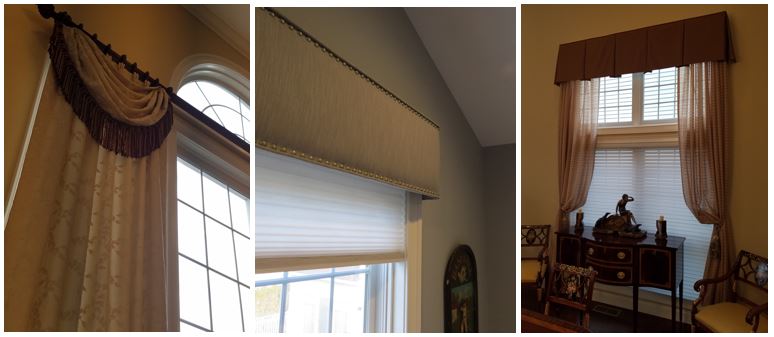Let’s identify a few types that cover or just decorate windows:
- Silhouettes and duettes are “honeycomb” type products made of material that is sheer or in a fabric that can be pleated. It rides up and down and can come with a silver backing to become “shade darkening” for bedrooms, or can be selected in sheer fabrics of various colors with no backing for public spaces.
- Luminettes are vertical silhouettes which open like curtains and have replaced verticals in many homes.
- Blinds in wood, metal or vinyl are available in different thicknesses of slats, in white, colors and wood tones.
- Drapery curtains in choices of sheer, opaque (can’t see through) or semi-opaque (light can come through) can be used as window dressing if they flank the window, but can also cover the window for privacy if they are on a “traveling” rod.
- Cornice and valances generally just cover the molding above the window. To determine the height, start with no less than eight inches and go up to eighteen inches depending on the height of your ceiling and the size of your window. (HINT: Cut a piece of cardboard or wood to see the proportion)
- Swags and jabots (draped fabric) over poles or just on a covered board (dust board covered in fabric) add elegance and softness to formal room settings.
- Poles (painted or not, plain or fluted) with rings, decorative brackets and finials (end pieces) are popular today, with stationary side panel curtains.
These basic styles and many combinations thereof, along with the hundreds of choices of fabrics, are the reason why even designers often puzzle over the perfect pairing of window and design.

 RSS Feed
RSS Feed